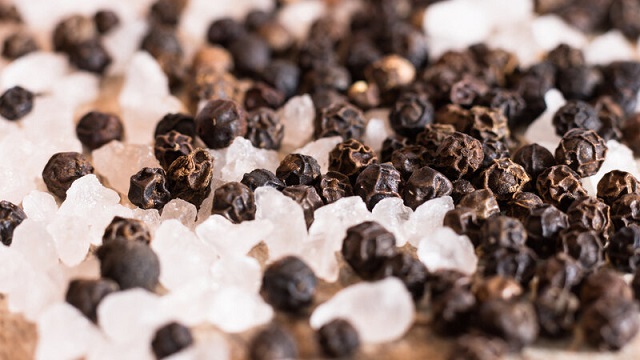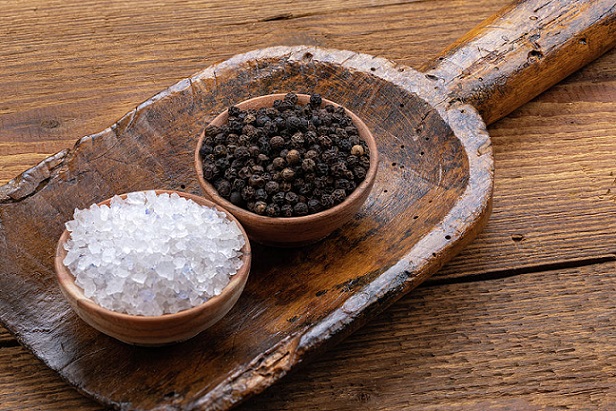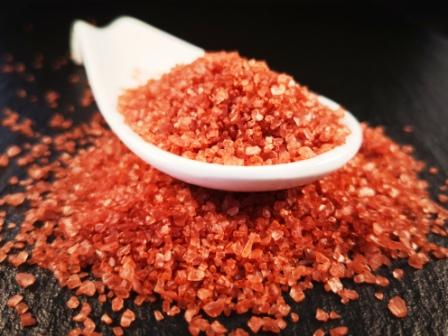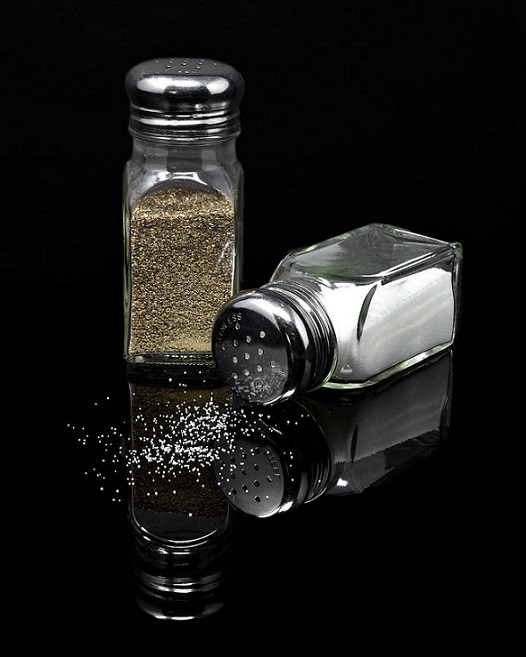Salt and Pepper
History Origination Cultivation Types And Flavors
Salt and Pepper: A Perspective Have you ever given a thought about salt and pepper? There’s more to it than just the shaker on the table. Pepper is the most widely traded spice in the world and served as the incentive for Christopher Columbus and others to search for a direct oceanic route to India. Hippocrates prescribed it as a digestive aid, and the active ingredient in pepper, piperine, is what makes it hot and is still used today as a heart and kidney stimulant. Historically, salt and pepper have been used as currency, medicinally and as seasoning. Plato wrote, “Pepper is small in quantity and great in value.” Ancient Egypt, the Greeks and the Romans all competed for supplies, which were shipped via small boats in the Mediterranean or overland by camel along the Silk Road. Both routes were treacherous, with the danger of sinking on the voyage contrasted against the cost of buying off Arab middlemen.
Salt And Pepper Shakers
Interestingly, all varieties of pepper come from the fruit of a perennial climbing shrub, and are grown by a handful of countries within 15 degrees of the equator. Differences in appearance and flavor are the result of picking the berries at different stages. Below is a list of characteristics, point of origin and best uses.
1. Green peppercorns – Picked before maturity and more expensive due to smaller yields and extra processing. Aromatic, but not pungent. Used in French, Creole, and Thai food.
2. Pink or Rose peppercorns – Not from the pepper vine, but rather from a small tree related to the rose bush. Grown on the French Island of Reunion. Rare and expensive, rose pepper has a milder, sweeter flavors and is used in nouveau cuisine or in pepper mixtures.
3. White peppercorns – Fully ripened with the outer skin boiled off. Hotter flavor, but fewer aromas. White pepper is the most popular spice in Northern Europe and is used in sauces, soups, potatoes and beverages.

Crystal Salts And Whole Peppercorn
4. Red peppercorns – Picked at full maturity and dried whole. Extremely rare and expensive. There are two varieties, Muntok, from Indonesia and the superior pepper, Sarawak, from Malaysia.
5. Black peppercorns – The most popular variety in the US, they are picked while still ripening, then dried and fermented naturally in the sun. There are several types:
- a. Malabar – From SW India. Slightly green in color, robust flavor.
- b. Tellicherry – Also from SW India. Large, dark chocolate to black peppercorns with pungent, complex aromas. These are considered the best.
- c. Sarawak – From Malaysia. Least pungent, mild, fruity flavor.
- d. Lampong – From Sumatra. Earthy, smoky aromas, hotter flavor.
- e. Talamanca Del Caribe – From Ecuador, certified organic, the world’s finest pepper, according to some. Robust flavors, hotter than average.
In no way does salt pale to pepper in comparison. Salt is not considered a spice, but a naturally- occurring mineral. Over time, it has been used as a preservative as well as medicinally. There are as many types and origination of salt as pepper, but modern salt is filled with additives to keep it from clumping up. Iodine is the main additive and tends to have a bitter flavor. Some of the varieties available include:
- 1. Sonoma Pacific Sea Salt – Kosher, coarse sea salt originating from California. Soft flavor.
- 2. Sterling Atlantic Sea Salt – Off-white color from Brazil.
- 3. Sel Gris de Guerande – Unrefined, organic and sun dried. Originating in Northern France, it is very soft, flavorful, but not good in a grinder.
- 4. Fleur de Sel de Guerande – The finest available. Moist, slightly gray and used as a finishing salt served in a small dish on the table.


Alaea Hawaiian Red Sea Salt
5. Alaea Hawaiian Red Sea Salt – Hailing from Hawaii, it is harvested from salt beds lined with Alaea red clay that lends color and unique flavor. Use on meats and fresh vegetables.
6. Salish Pacific Alder Smoked Sea Salt – A natural, coarse-grained salt that is slow smoked over red alder to give it an earthy flavor. Good for salads, meats and salmon. Have you heard the phrase, “Worth your weight in salt? “ Salt has been referred to and regarded for centuries as priceless. Pepper was worth more by weight than gold in the Middle Ages. Consider Sodom and Gomorrah. God turned the sinners into a veritable gold mine. So, the next time you are adjusting the flavor of your meal, consider the origin of the spice. Enjoy the flavors available and seek out some new varieties. Another modern miracle of agriculture and transportation that we often take for granted.
InternetBusinessIdeas-Viralmarketing Home Page
Tweet
Follow @Charlesfrize








New! Comments
Have your say about what you just read! Leave a comment in the box below.